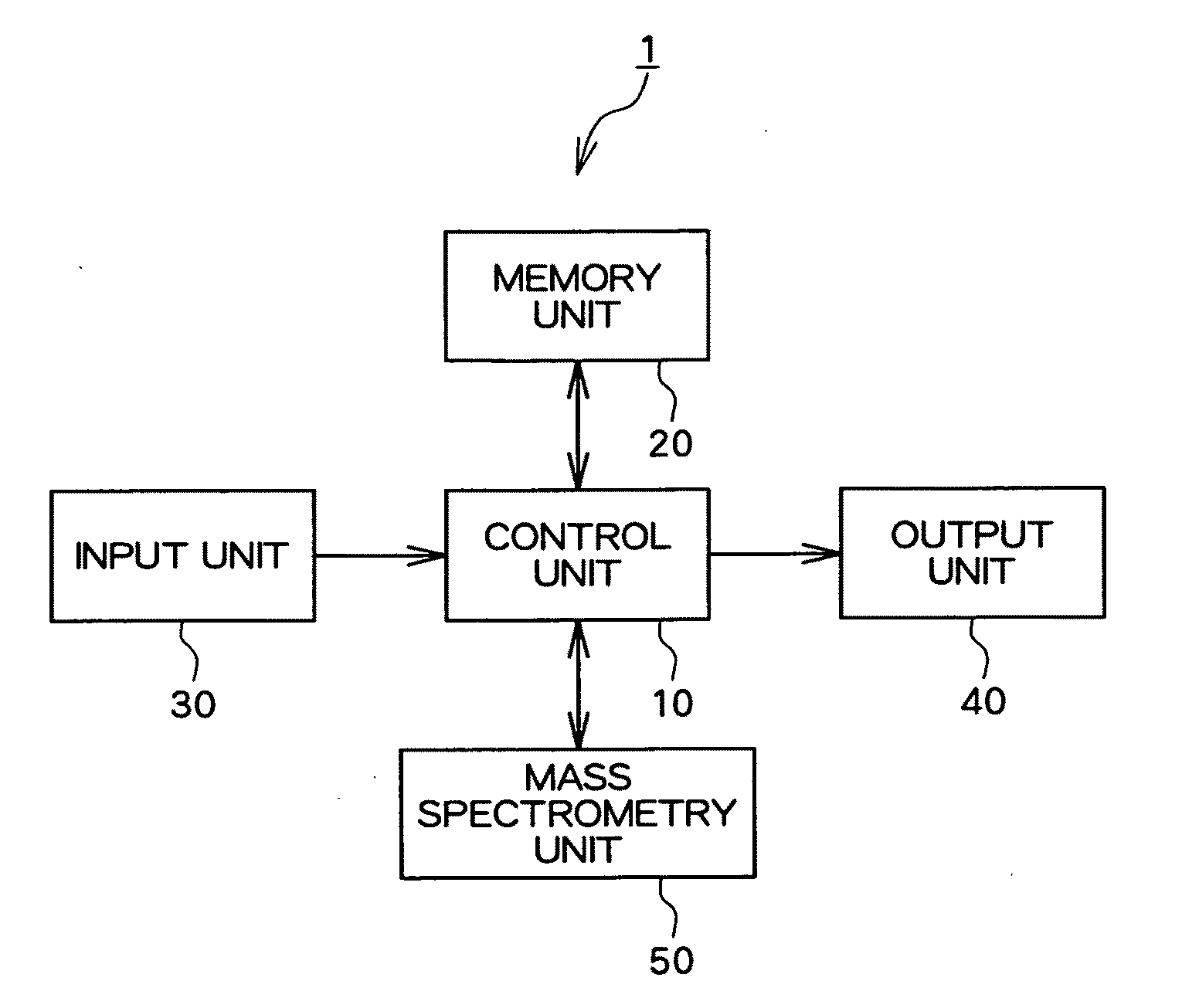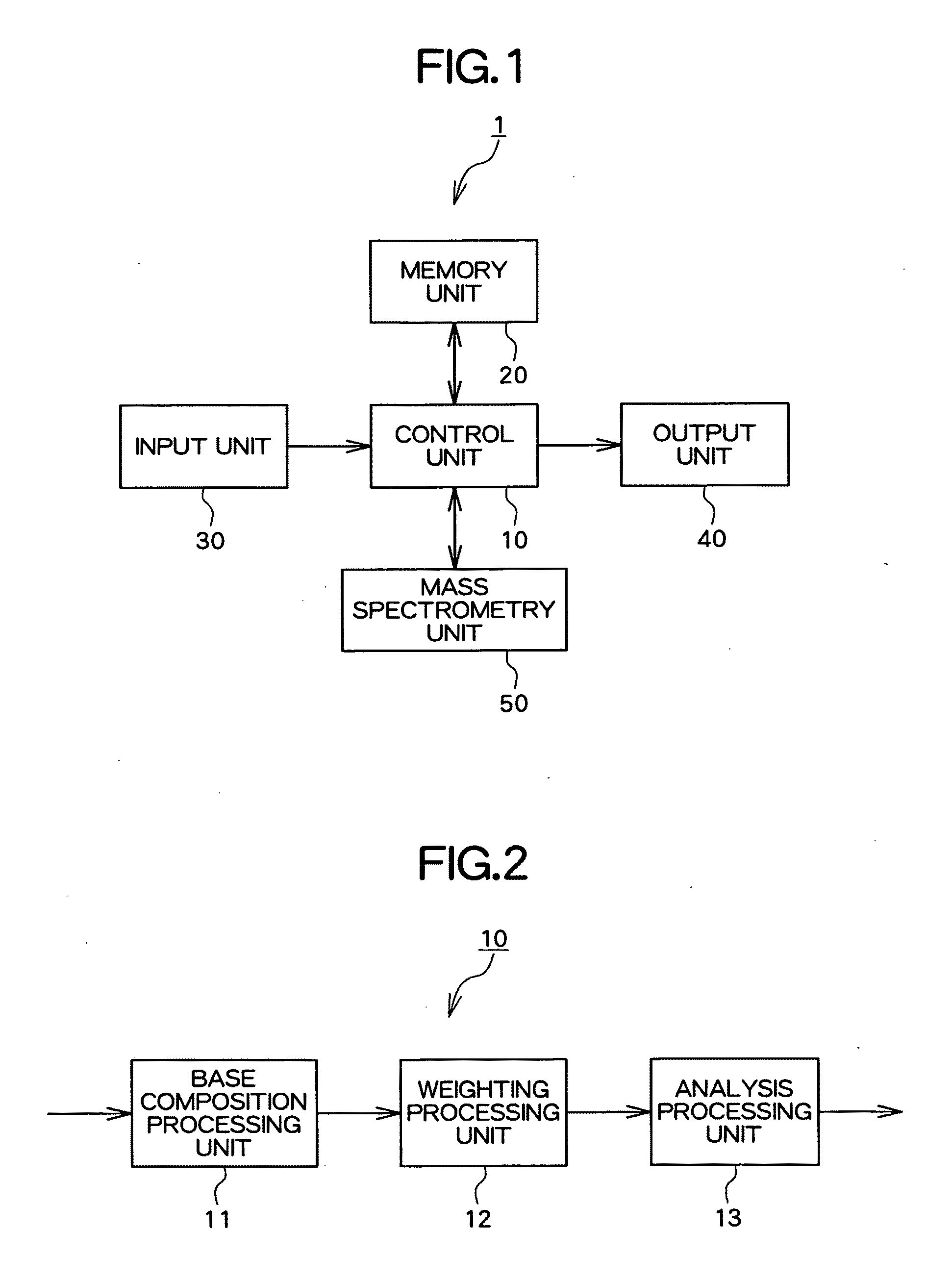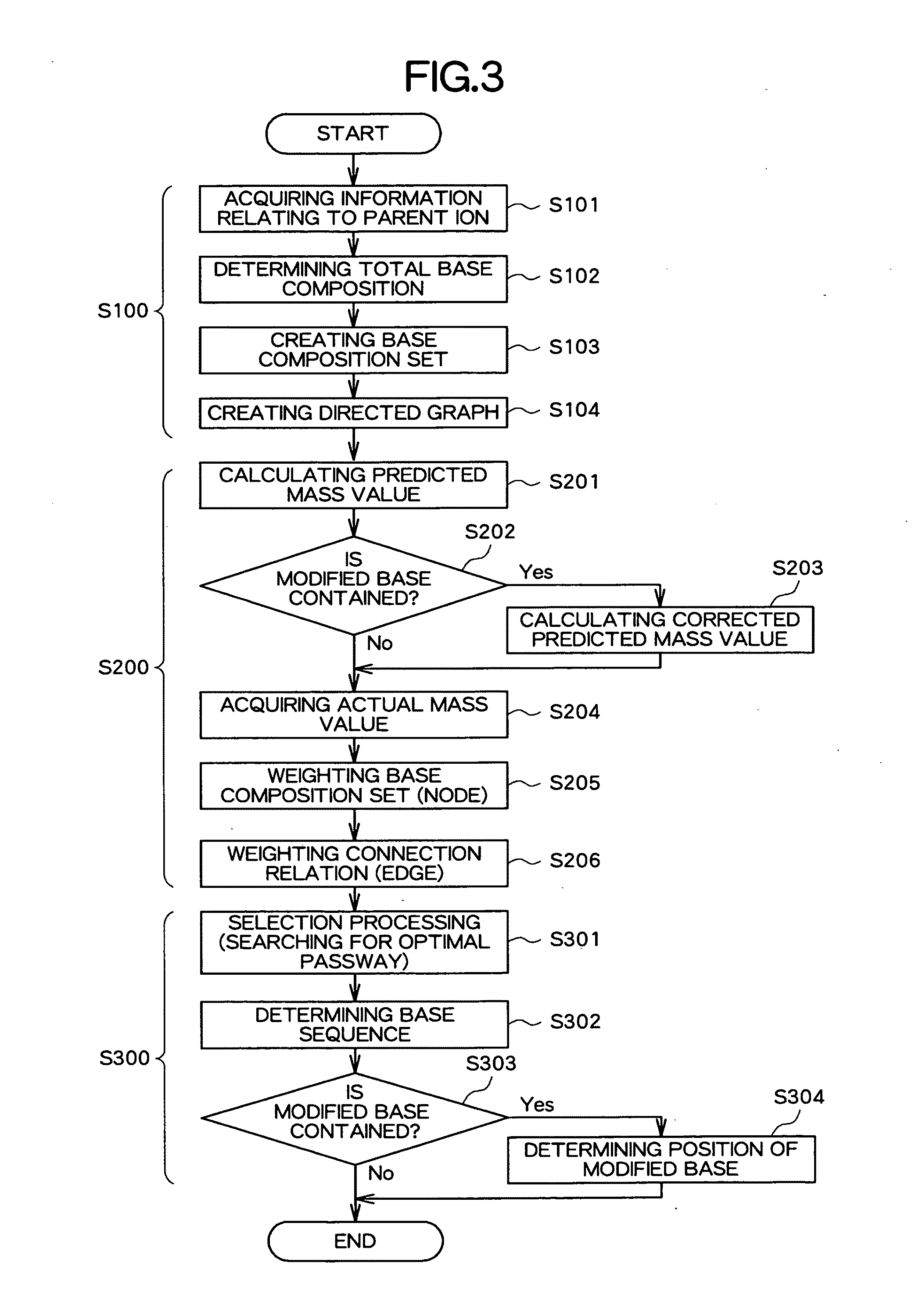Apparatus, method and program for analyzing nucleic acid base sequence and base modification
a nucleic acid and base sequence technology, applied in the field of apparatus, can solve the problems of inability to analyze the base sequence and the base modification of the nucleic acid, and achieve the effect of analyzing quickly and precisely
- Summary
- Abstract
- Description
- Claims
- Application Information
AI Technical Summary
Benefits of technology
Problems solved by technology
Method used
Image
Examples
example 1
[0151]An RNA fragment group was prepared by allowing RNase A to act on a purified Escherichia coli 5S ribosomal RNA molecule. The RNA fragment group was measured with an LC / MS mass spectrometer (LC-QqTOF) (QStar, Applied Biosystems Japan Ltd.). It should be noted that this mass spectrometer was used in all of the following examples. Ionization was performed by an ESI method. From the measurement data, an ion having an m / z value of “999.7” and a valence of “−2” was selected as a parent ion of an RNA fragment as an analytic target. Then, the parent ion was dissociated by CID in the mass spectrometer to obtain an MS / MS mass spectrum. The collision energy in CID was 45 eV. The total base composition determined based on the m / z value and the valence of the parent ion was “A3UG2”. In addition, the directed graph as shown in FIG. 6 was created based on the total base composition.
[0152]Further, with respect to each of nodes contained in the directed graph, a theoretical spectrum was obtaine...
example 2
[0163]Escherichia coli 5s RNA similar to that in Example 1 was cleaved with RNase T1 and the obtained RNA fragment was analyzed for its base sequence. An RNA fragment corresponding to a parent ion having an m / z value of “1044.5” and a valence of “−3” was used as an analytic target. The total base composition of the RNA fragment was calculated as “AU4C4G”. The collision energy used for CID in producing product ions from the parent ion was 50 eV. In this example, a score for an edge was not normalized. As a result of the analysis, the total base sequence of the RNA fragment was determined as “UCUCCUCAUG”, which coincides with an actual total base sequence of the RNA fragment. FIG. 21 illustrates a directed graph after the determination of an optimum route in this example.
example 3
[0164]A base sequence was analyzed with the algorithm of the present invention by using a synthetic RNA having a total base sequence of “AUCG”. The parent ion had an m / z value of “1222.2” and a valence of “−1”. The total base composition was determined as “AUCG”. The collision energy in CID was 50 eV. The terminal base could not be preliminarily determined because an RNase cleavage fragment was not used, but the total base sequence could be determined. FIG. 22 illustrates a directed graph after the determination of an optimum route.
PUM
| Property | Measurement | Unit |
|---|---|---|
| collision energy | aaaaa | aaaaa |
| collision energy | aaaaa | aaaaa |
| collision energy | aaaaa | aaaaa |
Abstract
Description
Claims
Application Information
 Login to View More
Login to View More - R&D
- Intellectual Property
- Life Sciences
- Materials
- Tech Scout
- Unparalleled Data Quality
- Higher Quality Content
- 60% Fewer Hallucinations
Browse by: Latest US Patents, China's latest patents, Technical Efficacy Thesaurus, Application Domain, Technology Topic, Popular Technical Reports.
© 2025 PatSnap. All rights reserved.Legal|Privacy policy|Modern Slavery Act Transparency Statement|Sitemap|About US| Contact US: help@patsnap.com



